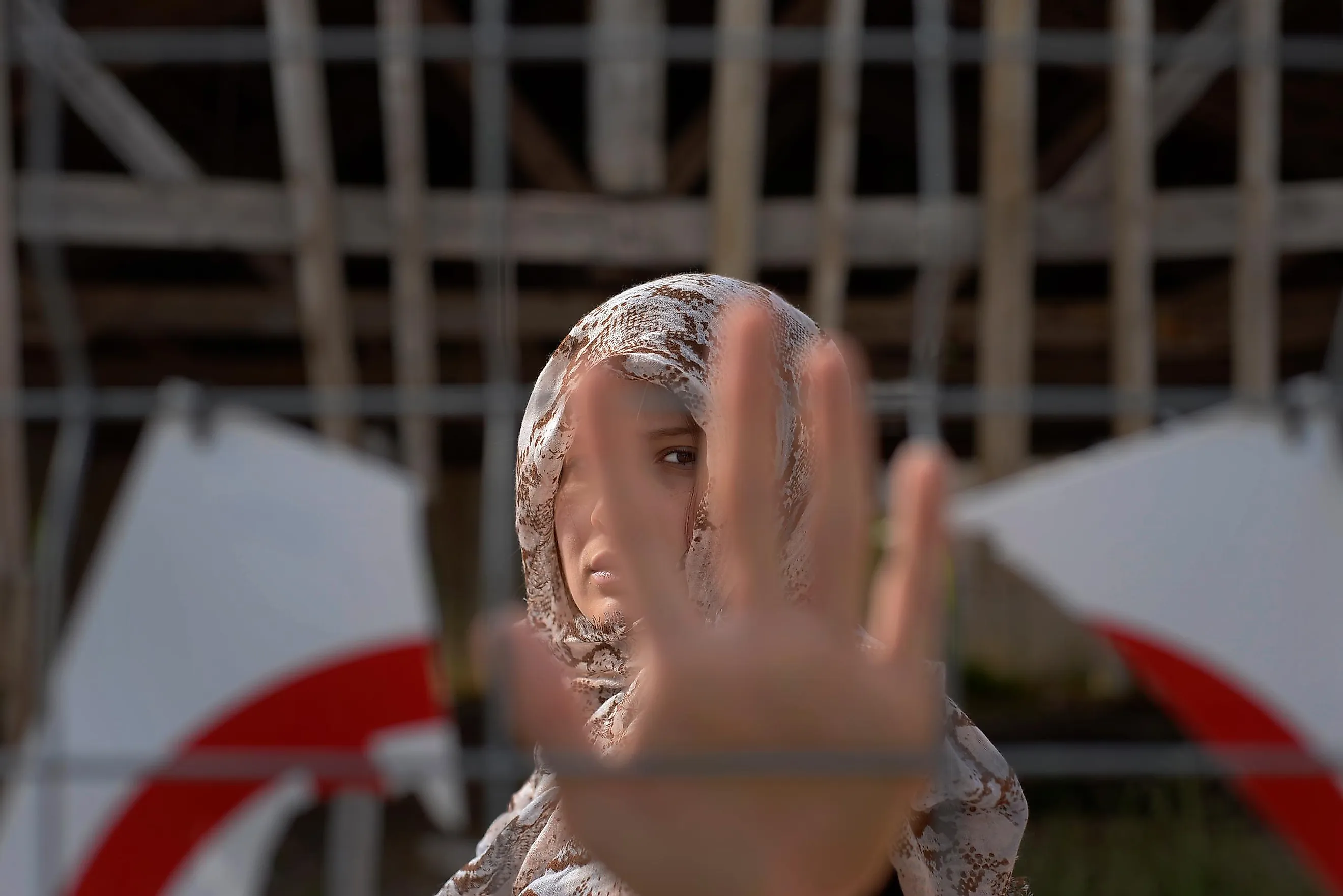
10 Worst Countries For Women
Bias towards men and gender-based injustice is common in many countries. Different studies measure the poor treatment of women in various ways to generate reports. There are some truly-horrific actions behind the statistics in these ten worst countries for women from the 2021-2022 WPS Report ranking 170 countries on the basis of women peace and security using the National Index Score:
1. Afghanistan - 0.278 (170/170)
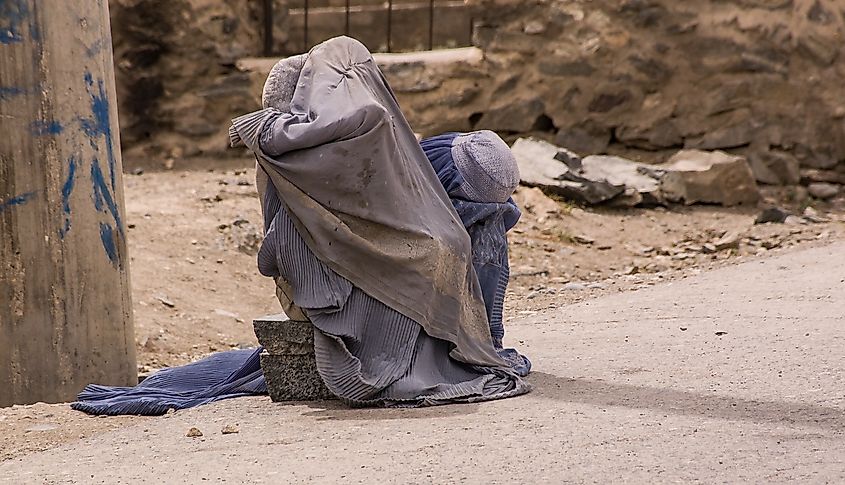
Afghanistan's aggressive gender-based roles and half-a-century-worth of conflict make it the worst country for women. It ranks last on the 170-country list in the WPS (Women, Peace, and Security) Index. It is also 157th of 162 in the UN Gender Inequality Index and ranks 7.2% for women's financial inclusion by WPS. Women's overall civil liberties in Afghanistan are severely restricted, which subjects them to one of the highest rates of intimate partner violence.35% of women are exposed to domestic violence, and 37% are illiterate, with known cases of being forced out of education. The girls in Afghanistan generally don't stay in school past second grade, with a third married by the age of 18 and facing a high chance of mortality during pregnancy. Illegal honor killings are also frequently practiced in the country.
2. Syria - 0.375 (169/170)
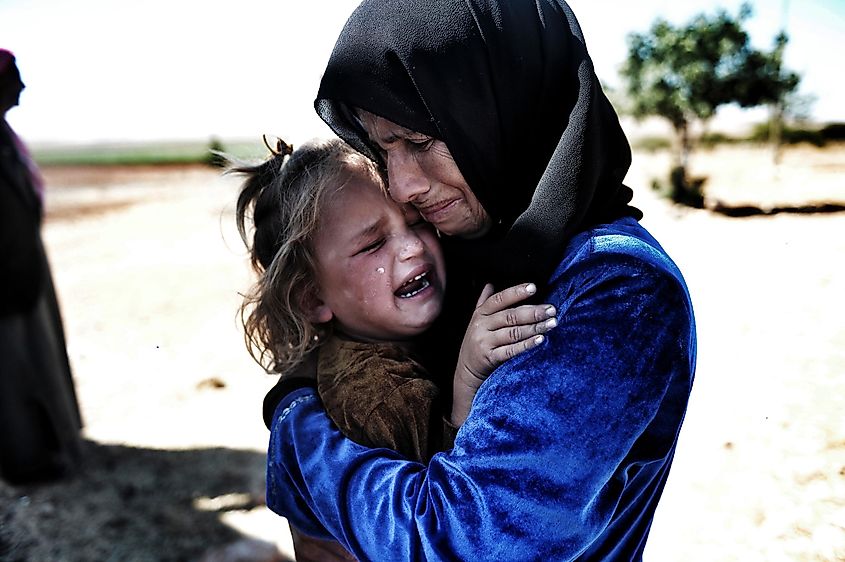
The country is perpetually among the top-worst nations for females based on justice, security, and inclusion among 153 countries. Syria ranks very low on the WPS Index partly because of the ongoing "worst humanitarian disaster of our time." The situation turned from bad to dire in the traditionally-patriarchal nation when the war broke out in March 2011. There is regular rape and torture in secret prisons, persistent malnutrition, and normalized gender-based violence. The latter "continues to undermine the health, dignity, security, and autonomy of its victims in Syria." Syrian women gained a voice in national elections only in the mid-1950s, and honor killings were criminalized only in 2020, while marriage is still contracted between husband and father of the wife. 75 of every 100,000 Syrian women are killed in organized violence, and only 16.9% feel safe in their communities. According to Georgetown University, there is a "massive" number of conflict-related sexual violence, while only 25% of women report intimate-partner violence. The stats are much-worse for Syrian refugee women.
3. Yemen - 0.388 (168/170)
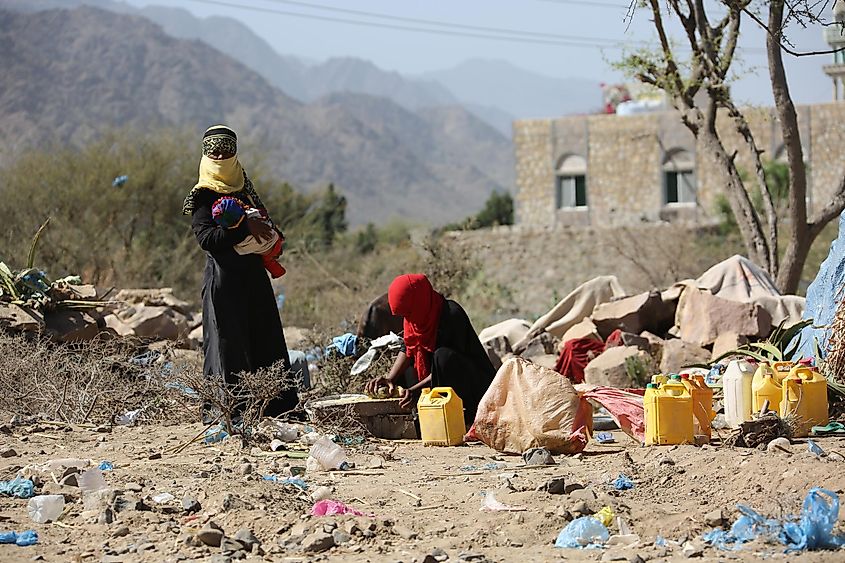
Yemen's gender inequality, with a vulnerable female population, is deeply entrenched in the patriarchal society and rigid gender roles. Traditions and modern culture promote negative attitudes toward women, exacerbated by the discriminatory legal system and economic inequality. Only 6.04% of women are in the workforce, with "Article 40" in Yemen's Personal Status Law stating that women cannot work in the same capacity as men and their jobs must be approved by husbands. There are no legal sanctions or civil recourse for sexual harassment at work, while there is an "unspoken societal consensus that females are often at fault" for the incidents. Persisting conflict in the country with deteriorating effects has horrific consequences for women and girls considered secondary in society. Yemen is in a dire economic crisis, with damaged infrastructure and collapsed services. The extreme shortage of food, water, sanitation, and health care makes it impossible for women to fend for their family. They are also vulnerable to limited mobility and access to help due to cultural gender norms. Women have no right to make important family decisions, no statute to report spousal abuse, and are threatened by more abuse and arrest if they disclose.
4. Pakistan - 0.476 (167/170)
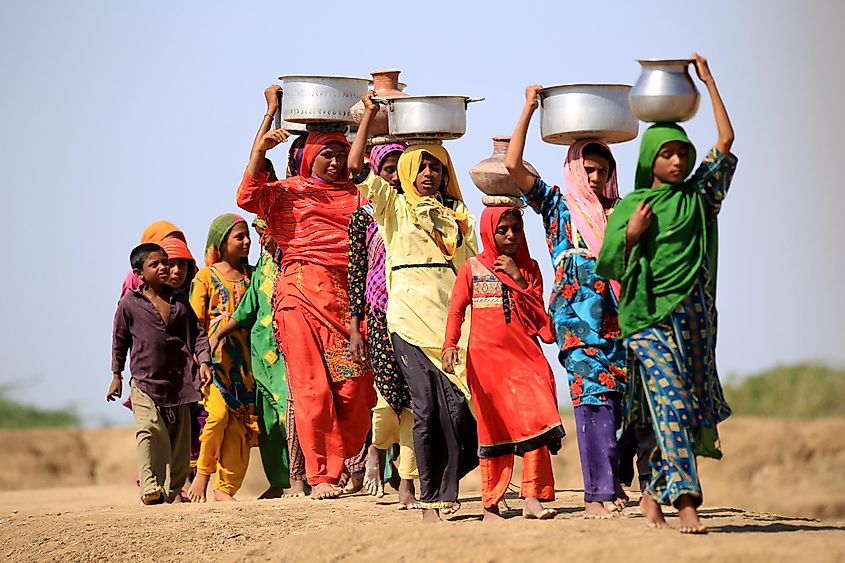
The 2021 WPS Index ranks Pakistan 167th out of 170 worst countries where women suffer extreme discrimination throughout their lifetime. Girls generally receive less than four years of education, and child marriage is common. The employment rate for women is 21%, along with only 7% for financial inclusion and "normalized" violence at the hands of the intimate partner. Violence against women and girls is a serious concern in Pakistan, with rape, illegal honor killings, acid attacks, and prevalent male dominance in the household.Gender discrimination in Pakistan largely stems from legal frameworks, biased roles, and norms of the society. There are also significant discrepancies in women's rights between the provinces that make the averages appear higher. These hide the extreme poverty and gender inequality in the lowest-ranked provinces that perform four times worse than the highest-ranking provinces.
5. Iraq - 0.516 (166/170)
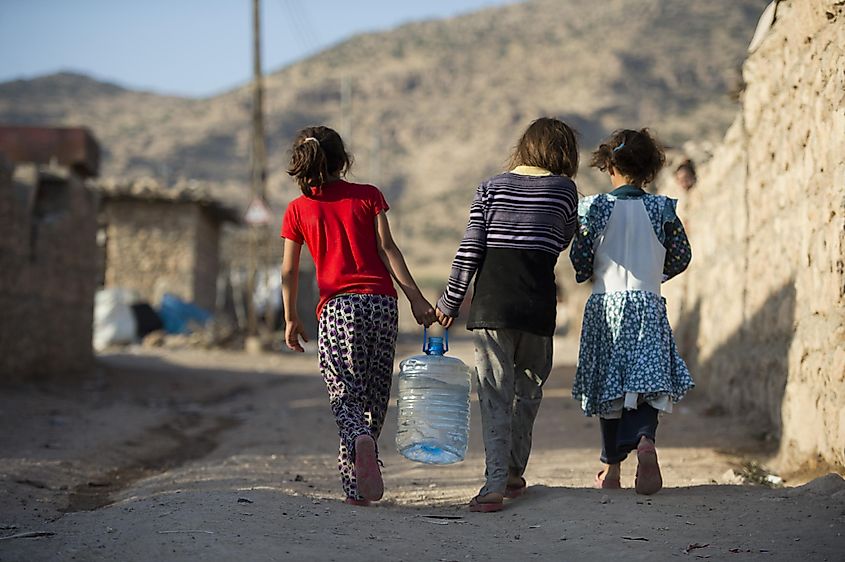
Protest movements in Iraq made news in October 2019 when countless journalists were threatened and killed in central and southern parts of the country. Militia groups were accused of arresting, kidnapping, and mercilessly shooting the reporters, on top of Iraq's unsolved 17 known murders in the last 15 years. The female population in Iraq suffers most from war and sectarian violence amidst ongoing debates on the discriminatory law that fosters gender inequality.The country continues to rank among the top worst for women due to enduring laws and normalized practices, including gender-based violence. In 2010, one in five Iraqi women was subject to domestic violence, and at least 36% of married Iraqi women experienced intimate abuse in 2012. A UN Women report confirms that the country's gender gap is also widening with "limited participation of women and girls in significant fields."
6. South Sudan - 0.541(165/170)
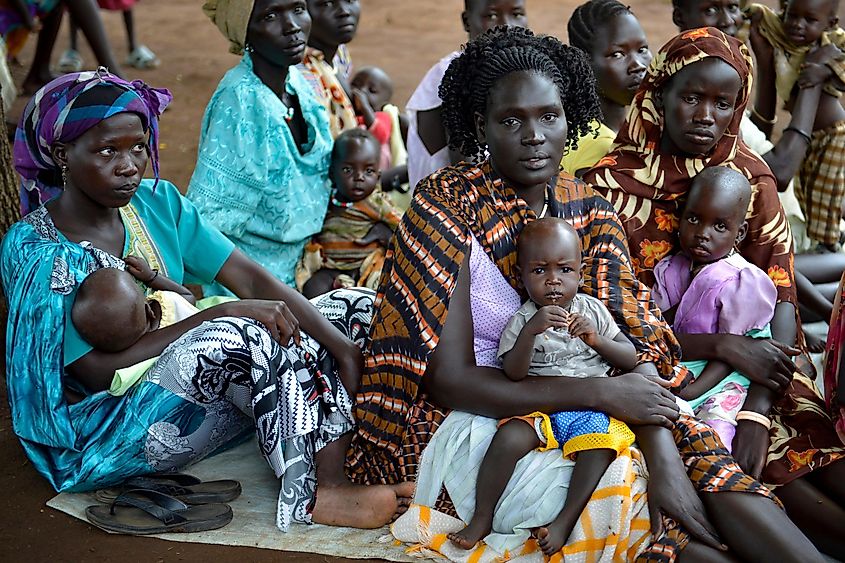
South Sudan is among the worst countries for women, with harmful gender norms that stem from traditionally patriarchal society. Longstanding conflict exacerbates imbalances within communities and at home. Women face persistent exclusion from decision-making and other political activity, which extends into very-minimal power to make decisions in the household. Lack of land rights and resource ownership give men the lee-way to dominate and control their intimate partners. According to the WPS Index, South Sudan ranked 165th out of 170 countries for women's rights and security in 2021. The country has the highest maternal mortality rate in the world, with at least one woman dying out of every 100 from complications during pregnancy or childbirth. Financial inclusion within community and society for women is less than 5%, and every fourth South Sudanese woman reports intimate partner violence.
7. Democratic Republic Of Congo - 0.547 (163/170)
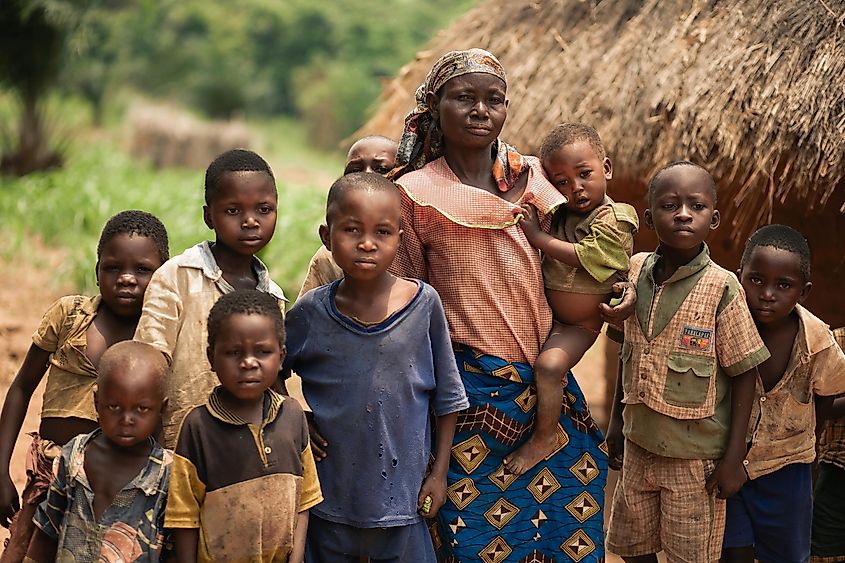
DR Congo ranks 163 out of 170 on the 2021 WPS Index and 150th out of 162 on the UN's 2020 Gender Inequality Index. There is stunted progress on gender equality and inequalities in all sectors. The nation is one of the least developed in the world, with persistent humanitarian needs where at least 7.5 million citizens require dire assistance. DR Congo could be Africa's wealthiest country with bountiful natural resources if it wasn't stuck in a perpetual rut. Discrimination starts at the legislature with a biased quarter of national laws that ripple effect into a culture where poor treatment of women is normalized. DR Congo was referred to as the "rape capital of the world" by a UN representative in 2010, with 48 rapes every hour, according to a study. Reports show that 37% of DR Congolese women face intimate-partner violence within one year-span, and over half will experience violence from an intimate partner in their lifetime. 37% of Congolese women are married before 18, and 124 girls out of every 1,000 will have at least one child between the ages of 15 and 19. 65.8% of men and 36.7% of women receive education beyond primary grades.
7. Chad - 0.547 (163/170)
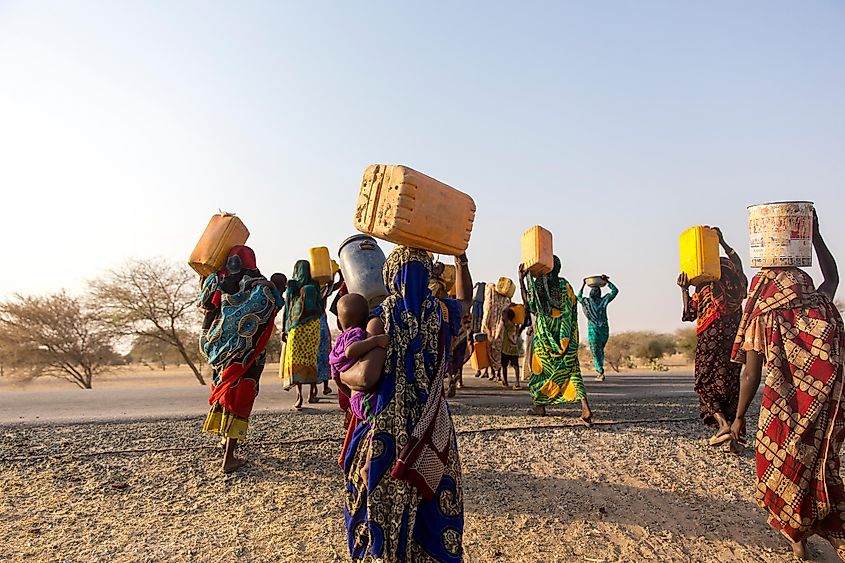
Chad is eighth-worst, according to WPS, and ranked 160th out of 162 countries on the UN's Gender Inequality Index in 2020. Child marriage remains very common in Chad, with the median age at 16 for girls, and 22 for boys, as per a 2015 report by Concern. According to an interviewee, "early marriage is a custom" that endangers girls' lives through "pregnancy, surgery, death, and also several cases of running away." Chad is the second-worst for maternal mortality in the world, with 1,140 deaths for every 100,000 live births. Women complete under two years of education and are perpetually underrepresented in the Chadian parliament. The country also ranked worst for female genital mutilation practices until the Reproductive Health Law was enacted two decades ago. After the stats were publicized, the percentage of women reporting intimate partner violence decreased.
9. Sudan - 0.556 (162/170)
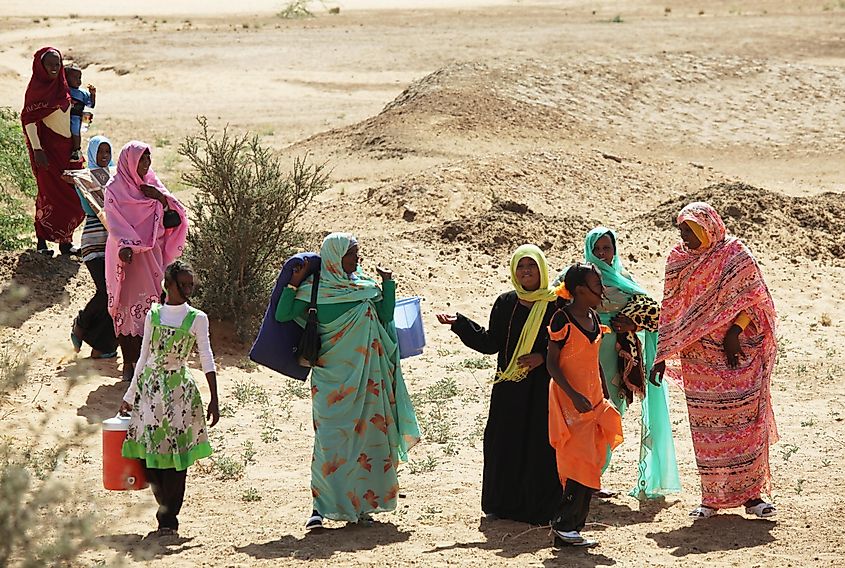
According to UNICEF, over a third of Sudanese women between 15 and 49 believe their intimate partner can righteously beat them circumstantially. The proportionate amount of women between 20 and 24 were married or in a union before their 18th birthday. There have been several advances to women's rights in Sudan since 2019, like the criminalization of female genital mutilation.In the same year, the country met its target of 40% female representation in the transitional parliament. Some laws regarding women's rights were also revoked, with less control over what they wear and can do in their personal life and for work. The progress in recent advancements was delayed by the COVID-19 pandemic, when the number of women in parliament dropped to 22% in 2021.
10. Sierra Leone - 0.563 (161/170)
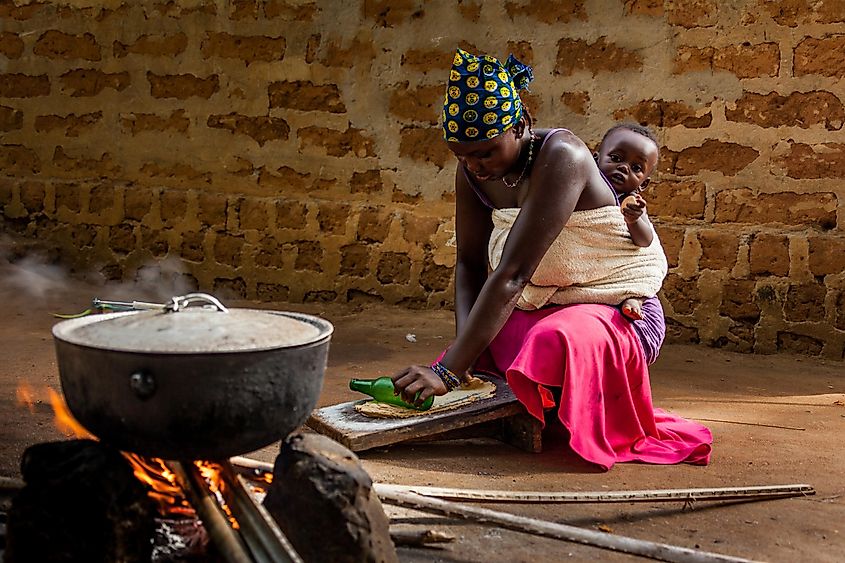
Sierra Leone is one of the few countries on this list that has been relatively peaceful in the last two decades. The country's slow progress on gender inequality stems from crises, like the Ebola epidemic from 2014 to 2016, that resulted in sky-rocketing unplanned teen pregnancies. According to the WPS Index, only 45.8% of women feel safe at night on the streets of their communities. There are still outdated and outmoded gender norms and widespread female genital mutilation.90% of women and girls between the ages of 15 and 49 experience some form of FGM within a lifetime. The country also ranks highest for maternal mortality, with 1,120 women dying out of 100,000 from complications during pregnancy or childbirth. A high majority of women receive under three years of schooling, where the teachers bluntly overlook school-related gender-based violence. The concern is working on a "Safe Learning Model" to stop normalizing and encouraging poor treatment of women from an early age.
These are the worst countries for women based on the peace and security of the female population out of 170 countries. Despite some advancements, progress on gender equality is slowed by conflict, underdevelopment, and traditional patriarchy, which means that many women continuously endure unimaginable suffering around the world every day.
The WPSI Index (2021-22); best country for women (rank1) - worst country for women (rank 170)
| Rank | Country | National Index Score |
|---|---|---|
| 1 | Norway | 0.922 |
| 2 | Finland | 0.909 |
| 3 | Iceland | 0.907 |
| 4 | Denmark | 0.903 |
| 5 | Luxembourg | 0.899 |
| 6 | Switzerland | 0.898 |
| 7 | Sweden | 0.895 |
| 8 | Austria | 0.891 |
| 9 | United Kingdom | 0.888 |
| 10 | Netherlands | 0.885 |
| 11 | Germany | 0.88 |
| 12 | Canada | 0.879 |
| 13 | New Zealand | 0.873 |
| 14 | Spain | 0.872 |
| 15 | France | 0.87 |
| 15 | Singapore | 0.87 |
| 15 | Slovenia | 0.87 |
| 18 | Portugal | 0.868 |
| 19 | Ireland | 0.867 |
| 20 | Estonia | 0.863 |
| 21 | United States | 0.861 |
| 22 | Belgium | 0.859 |
| 23 | Latvia | 0.858 |
| 24 | Australia | 0.856 |
| 24 | United Arab Emirates | 0.856 |
| 26 | Croatia | 0.848 |
| 27 | Israel | 0.844 |
| 28 | Italy | 0.842 |
| 29 | Poland | 0.84 |
| 30 | Lithuania | 0.833 |
| 31 | Czech Republic | 0.83 |
| 32 | Hong Kong | 0.829 |
| 33 | South Korea | 0.827 |
| 34 | Serbia | 0.826 |
| 35 | Japan | 0.823 |
| 36 | Cyprus | 0.82 |
| 37 | Malta | 0.815 |
| 38 | Belarus | 0.814 |
| 39 | Slovakia | 0.811 |
| 40 | Georgia | 0.808 |
| 41 | Bulgaria | 0.804 |
| 42 | Montenegro | 0.803 |
| 43 | Jamaica | 0.8 |
| 44 | North Macedonia | 0.798 |
| 45 | Greece | 0.792 |
| 46 | Hungary | 0.79 |
| 47 | Costa Rica | 0.781 |
| 48 | Uruguay | 0.776 |
| 49 | Argentina | 0.774 |
| 49 | Bolivia | 0.774 |
| 49 | Ecuador | 0.774 |
| 52 | Trinidad and Tobago | 0.771 |
| 53 | Russian Federation | 0.77 |
| 54 | Mongolia | 0.769 |
| 55 | Romania | 0.765 |
| 56 | Bosnia and Herzegovina | 0.764 |
| 56 | Guyana | 0.764 |
| 58 | Albania | 0.762 |
| 59 | Kazakhstan | 0.761 |
| 60 | Turkmenistan | 0.76 |
| 61 | Philippines | 0.758 |
| 62 | Chile | 0.757 |
| 63 | Nicaragua | 0.756 |
| 64 | Mauritius | 0.75 |
| 64 | Moldova | 0.75 |
| 66 | Rwanda | 0.748 |
| 66 | South Africa | 0.748 |
| 66 | Ukraine | 0.748 |
| 69 | El Salvador | 0.747 |
| 69 | Ghana | 0.747 |
| 71 | Dominican Republic | 0.746 |
| 71 | Venezuela | 0.746 |
| 73 | Thailand | 0.744 |
| 74 | Lao PDR | 0.741 |
| 74 | Uzbekistan | 0.741 |
| 76 | Tanzania | 0.739 |
| 77 | Barbados | 0.737 |
| 77 | Kosovo* | 0.737 |
| 77 | Paraguay | 0.737 |
| 80 | Brazil | 0.734 |
| 80 | Fiji | 0.734 |
| 80 | Suriname | 0.734 |
| 83 | Panama | 0.733 |
| 83 | Peru | 0.733 |
| 85 | Armenia | 0.727 |
| 85 | Tajikistan | 0.727 |
| 85 | Zimbabwe | 0.727 |
| 88 | Mexico | 0.725 |
| 89 | China | 0.722 |
| 90 | Colombia | 0.721 |
| 90 | Kenya | 0.721 |
| 92 | Belize | 0.72 |
| 93 | Cambodia | 0.719 |
| 93 | Tonga | 0.719 |
| 95 | Namibia | 0.714 |
| 95 | Nepal | 0.714 |
| 97 | Bahrain | 0.713 |
| 97 | Kyrgyzstan | 0.713 |
| 97 | Qatar | 0.713 |
| 100 | Indonesia | 0.707 |
| 100 | Timor-Leste | 0.707 |
| 102 | Saudi Arabia | 0.703 |
| 103 | Malaysia | 0.702 |
| 104 | Honduras | 0.698 |
| 105 | Sri Lanka | 0.697 |
| 106 | Turkey | 0.693 |
| 107 | Viet Nam | 0.692 |
| 108 | Cabo Verde | 0.69 |
| 109 | Uganda | 0.685 |
| 110 | Oman | 0.675 |
| 111 | Mozambique | 0.673 |
| 112 | Maldives | 0.671 |
| 113 | Ethiopia | 0.668 |
| 114 | Benin | 0.667 |
| 115 | Guatemala | 0.664 |
| 116 | Zambia | 0.661 |
| 117 | Tunisia | 0.659 |
| 118 | Botswana | 0.657 |
| 119 | Sao Tome and Principe | 0.656 |
| 120 | Senegal | 0.655 |
| 120 | Togo | 0.655 |
| 122 | Côte d'Ivoire | 0.654 |
| 123 | Kuwait | 0.653 |
| 124 | Lesotho | 0.65 |
| 125 | Iran | 0.649 |
| 126 | Cameroon | 0.648 |
| 127 | Jordan | 0.646 |
| 128 | Malawi | 0.644 |
| 129 | Bhutan | 0.642 |
| 130 | Burundi | 0.635 |
| 130 | Nigeria | 0.635 |
| 132 | Azerbaijan | 0.63 |
| 132 | Lebanon | 0.63 |
| 134 | Myanmar | 0.629 |
| 135 | Comoros | 0.628 |
| 136 | Burkina Faso | 0.627 |
| 136 | Egypt | 0.627 |
| 138 | Equatorial Guinea | 0.624 |
| 138 | Morocco | 0.624 |
| 140 | Gabon | 0.623 |
| 141 | Algeria | 0.616 |
| 142 | Haiti | 0.611 |
| 143 | Mali | 0.61 |
| 144 | Angola | 0.609 |
| 145 | Papua New Guinea | 0.604 |
| 146 | Eswatini | 0.602 |
| 146 | Guinea | 0.602 |
| 148 | Gambia | 0.597 |
| 148 | India | 0.597 |
| 150 | Libya | 0.596 |
| 151 | Djibouti | 0.595 |
| 152 | Bangladesh | 0.594 |
| 152 | Liberia | 0.594 |
| 152 | Niger | 0.594 |
| 155 | Congo | 0.582 |
| 156 | Madagascar | 0.578 |
| 157 | Central African Republic | 0.577 |
| 157 | Mauritania | 0.577 |
| 159 | Somalia | 0.572 |
| 160 | Palestine* | 0.571 |
| 161 | Sierra Leone | 0.563 |
| 162 | Sudan | 0.556 |
| 163 | Chad | 0.547 |
| 163 | Democratic Republic of the Congo | 0.547 |
| 165 | South Sudan | 0.541 |
| 166 | Iraq | 0.516 |
| 167 | Pakistan | 0.476 |
| 168 | Yemen | 0.388 |
| 169 | Syria | 0.375 |
| 170 | Afghanistan | 0.278 |











